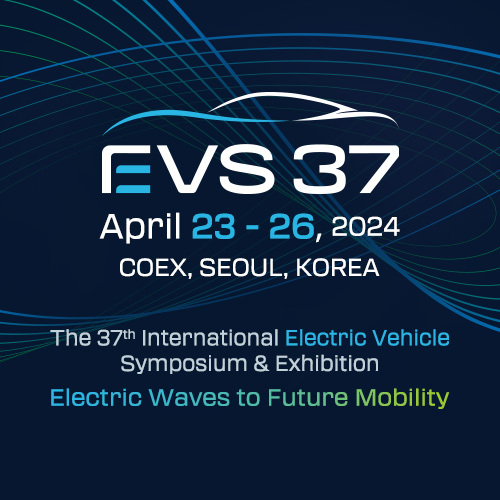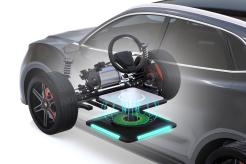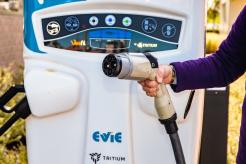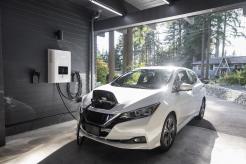If you’re considering installing electric vehicle charging stations at your home or business, there are a few key terms and ideas you’ll need to know. Chief among them is EVSE, or electric vehicle supply equipment. In this guide, we’ll break down what EVSE is, what it’s used for, and why it’s relevant if you want to get into electric vehicle charging. Let’s dive in!
What is EVSE?
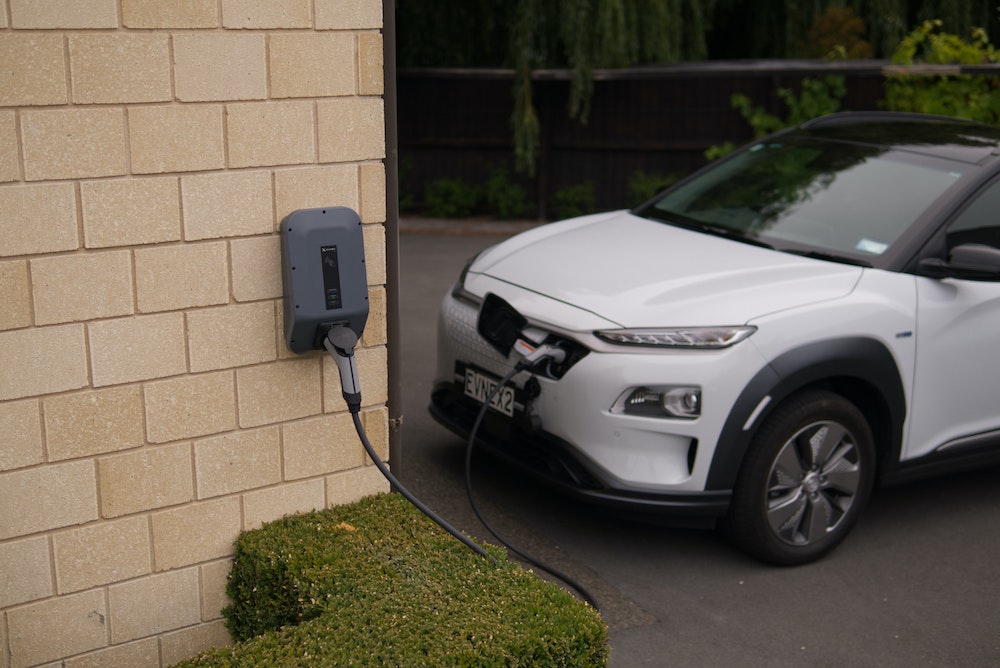
Photo by Ed Harvey on Unsplash
EVSE stands for electric vehicle supply equipment, which includes the hardware used to connect an electric vehicle (EV) to an electricity source and the software that controls the charging process. This equipment could be anything from a wall-mounted charger in your garage to larger, commercial “level 2” stations set up in parking lots and other public locations.
The Primary Components of EVSE
EVSE typically consists of three main components: the electric meter, the charging station, and the cable connecting the two.
Electric Meter
The electric meter measures the amount of electricity the vehicle uses and allows it to be billed accordingly. It is usually located in the wall near the charging station.
Charging Station
The charging station is what motorists plug their cars into to charge them up. It is typically equipped with a digital display, allowing users to see the energy they are drawing from the grid easily.
Cable
The cable connects these two pieces of equipment, allowing them to transfer power. This cable typically has a locking mechanism so the station cannot be unplugged without authorization.
Additional Components of EVSE
EVSE can also include other systems, such as communication, energy management, and safety devices.
Communication Systems
Communication systems allow data to be sent back and forth between the EVSE and the electric grid, providing information such as the amount of energy used and the charging status.
Energy Management Systems
Energy management systems help utilities manage their electricity demand more efficiently, allowing them to balance the supply and demand of electricity on the grid.
Safety Devices
Safety devices ensure that EVSE is being used safely; for example, an overload protection system can prevent too much electricity from being drawn at any time.
Most Common Types of EVSE

There are a few different types of EVSE available on the market, each of which has its advantages and disadvantages. Here are some of the most common:
- Level 1 Chargers. These chargers are typically portable devices that plug into a standard 120-volt outlet.
- Level 2 Chargers. These chargers usually require a dedicated 240-volt outlet. They are often bulkier than level 1 chargers and must be professionally installed.
- DC Fast Chargers. These high-power chargers can be used to refuel an EV quickly. They must be plugged directly into a dedicated 480-volt outlet.
How Does EVSE Work?

Photo by CHUTTERSNAP on Unsplash
When plugged into an EVSE, electric vehicles draw power from the grid or other power sources, such as solar-powered batteries. This power is then transformed and fed to the vehicle’s battery, allowing it to charge quickly. The EV acts as a control system, managing how much electricity is being drawn at any one time and ensuring that it does not exceed safe levels.
In some cases, EVs provide electricity back to the grid once charged, known as “vehicle-to-grid” power, and help balance the grid’s demand.
Top EVSE Providers in the United States
The US is home to numerous well-regarded EVSE providers, including ChargePoint, EV Connect, EVgo, and more.
Why is EVSE Important?

Photo by Michael Olsen on Unsplash
As electric vehicle adoption grows, so does the need for reliable and accessible EVSE. This proliferation of EVSE is helping to create a more sustainable transportation system by providing the necessary infrastructure for electric vehicles to run and charge. EV charging infrastructure is essential in transitioning away from fossil fuels and towards cleaner sources of energy that can help reduce emissions and improve air quality.
Additional Benefits of Installing EVSE
In addition to helping reduce emissions and supporting the transition away from fossil fuels, installing EVSE can also provide your home or business with numerous benefits. These include:
- Increased convenience. EVSE can make it easier to recharge your electric vehicle at home or on the go.
- Lower costs. By having access to an EVSE, you may be able to save money by taking advantage of off-peak charging rates.
- Regulatory incentives. Some states offer financial incentives for installing EVSE, such as tax credits or rebates.
- Increased property value. Installing EVSE may make your home or business more attractive to potential buyers and tenants.
Potential Challenges of Owning EVSE

Photo by Dimitri Karastelev on Unsplash
Though EVSE is an essential step in the future of sustainable transportation, there are a few potential challenges you should consider before investing in a system. These include:
- Cost. Installing EVSE can be expensive, especially if you need to hire a qualified electrician to do the work.
- Maintenance. As with other systems, EVSE requires regular maintenance to ensure proper functioning.
- Regulatory requirements. Depending on where you live, there may be specific regulations you must meet when installing an EVSE. It is important to familiarize yourself with these rules before beginning installation.
- Technical complexity. As with any electrical system, understanding the technical aspects of EVSE can be quite difficult. It is important to consult a qualified electrician if you feel overwhelmed.
So, before you move forward with installing EVSE, you may want to keep these considerations in mind.
The Future of EVSE
EVSE technology is constantly advancing and evolving—it now includes more intelligent charging capabilities that allow drivers to connect with their vehicles remotely, manage charging times, and monitor power usage. We expect to see more of these features as the technology becomes more popular and accessible.
Are you interested in learning more about opportunities in EV Charging Infrastructure? Join us at the upcoming EV Charging Summit & Expo!

